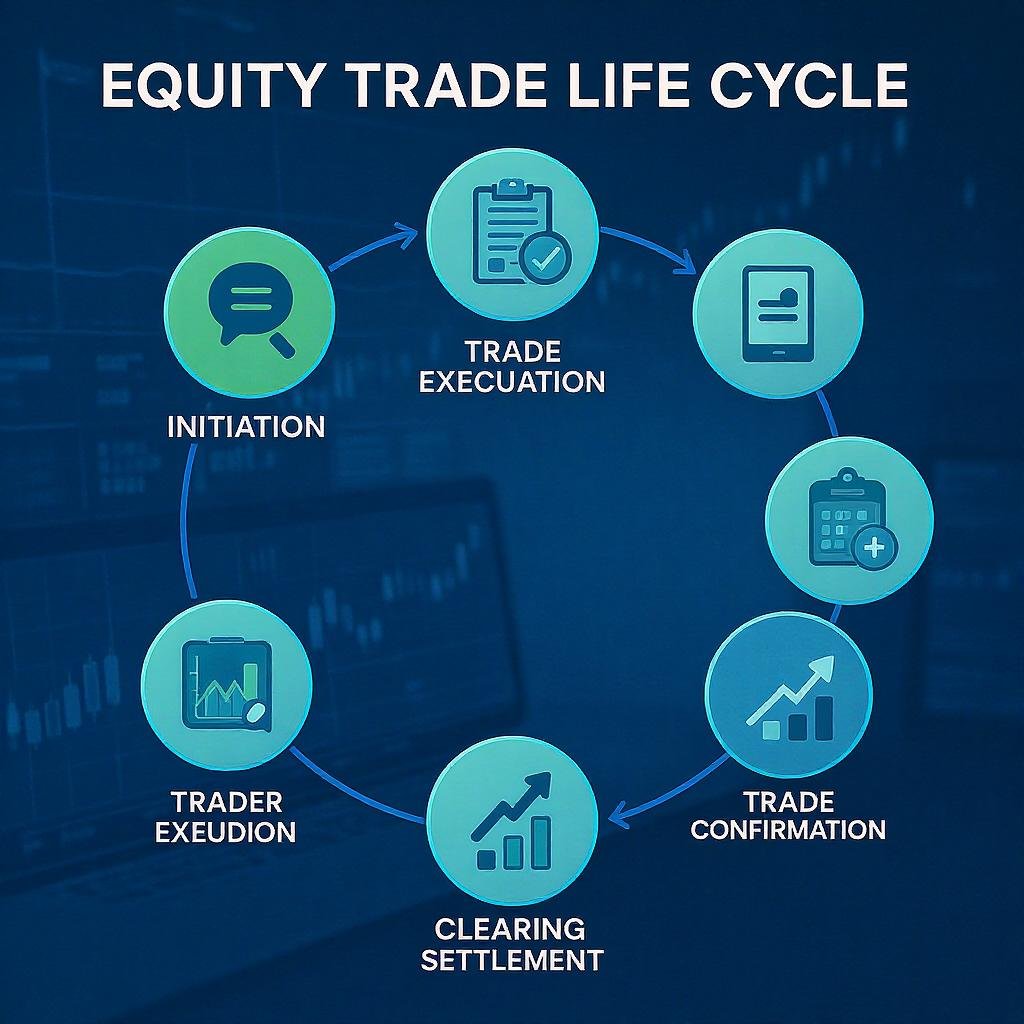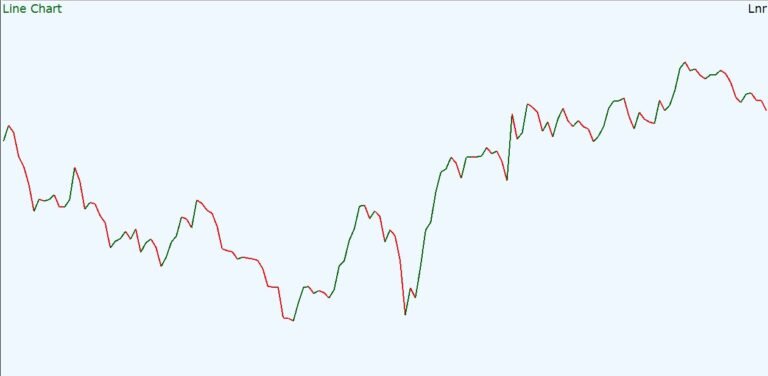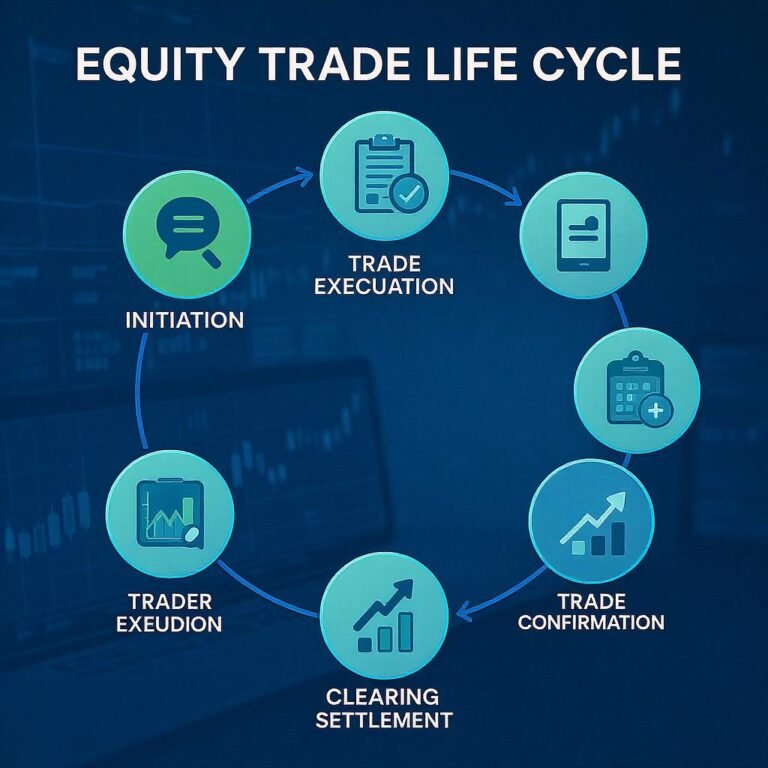
Here’s a step‑by‑step walkthrough of a typical equity trade life‑cycle, from the moment you click “Buy
1. Trade Initiation & Order Placement
Investor Decision
- You decide to buy or sell shares of XYZ Ltd.
- You choose order type (market, limit, stop‑loss), quantity, and validity (e.g. “day” or “GTC”).
Order Entry
- You enter your order on a trading platform (broker’s app or FIX terminal).
- Your broker’s system assigns a unique Order ID and routes it to the exchange’s order book.
Order Routing & Execution
Order Book Matching
- The exchange (e.g., NSE, BSE) receives your order and matches it against resting orders on the opposite side.
- If it’s a market order, it hits the best available price; a limit order waits until price conditions are met.
Trade Execution
Once matched, both buy and sell orders are executed, generating a Trade Confirmation with:
- Trade ID
- Executed price and quantity
- Timestamp
You and your broker receive an Execution Report in real time.
3. Clearing & Netting
Trade Reporting to Clearing Corporation
- The exchange’s clearing arm (e.g., NSE Clearing) nets all buy and sell trades across participants.
- Each broker’s net obligations (what they owe or are owed) are calculated.
Margin & Collateral
- To safeguard the system, brokers must post initial margin and mark‑to‑market (MTM) margin with the clearing corporation.
- If positions move against them, they must top up collateral daily (the “MTM” process).
4. Settlement (T+1/T+2)
Pay‑in & Delivery‑in (T+1/T+2 Day)
- Buyers transfer funds (pay‑in) to their broker; sellers deliver shares (delivery‑in) to their broker’s clearing account.
- In India, most equity trades settle on T+1 (one business day later). Globally, the norm is T+2.
Pay‑out & Delivery‑out
- Once the clearing corporation confirms receipt, it instructs:
- Funds move from buyer’s broker → seller’s broker.
- Securities move from seller’s broker → buyer’s broker.
Custody Transfer
- Your shares credit to your demat account; your funds debit for purchases.
- You become the registered beneficial owner of the shares.
5. Post‑Settlement & Reporting
Trade Confirmation & Contract Note
- Your broker issues a Contract Note—a legal record of the trade detailing: trade date, settlement date, broker fees, GST, stamp duty.
Reconciliation & Allocation
- If the trade was part of a pooled or algorithmic order, your broker allocates specific shares/funds to your sub‑account.
- Internal bookkeeping ensures your ledger and the exchange’s records match.
Regulatory Reporting
- Brokers report aggregated trade data to regulators (SEBI) daily.
- Large trades may require disclosure under “block deal” or “bulk deal” rules.
6. Corporate Actions & Lifecycle Events
Dividends, Bonus Issues, Splits
- As a recorded shareholder on the record date, you receive dividends credited to your bank or bonus shares credited to your demat.
Voting Rights & Communications
- You can vote at AGMs or receive financial statements, as maintained by the registrar and transfer agent.
7. Trade Lifecycle Diagram (Simplified)
flowchart LR
A[Order Entry]
B[Exchange Matching]
C[Execution Report]
D[Clearing & Netting]
E[Pay‑in / Delivery‑in (T+1)]
F[Pay‑out / Delivery‑out]
G[Contract Note & Reconciliation]
H[Corporate Actions & Reporting]
A –> B –> C –> D –> E –> F –> G –> H
Key Takeaways
- Timestamps & IDs at each stage ensure traceability and audit trails.
- Margins & collateral protect against counterparty risk during clearing.
- T+1 settlement accelerates fund and share transfers—minimizing credit risk.
- Post‑trade reporting and corporate actions embed your ownership rights and obligations.
Understanding each leg of this life‑cycle helps you troubleshoot delays (e.g., failed pay‑in), interpret broker communications, and appreciate why settlement timelines, margin calls, or corporate record dates matter!



